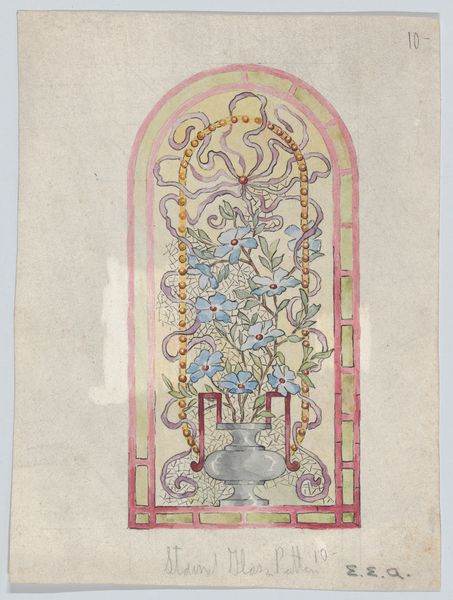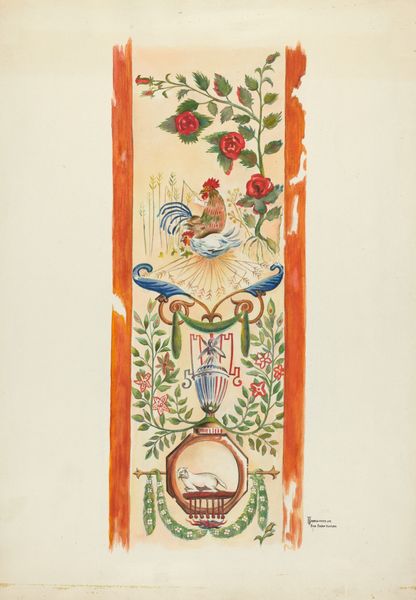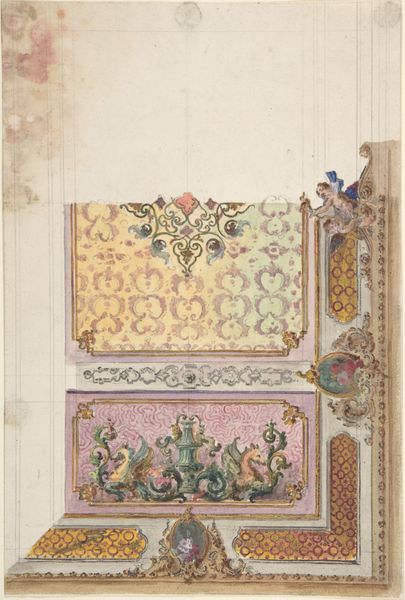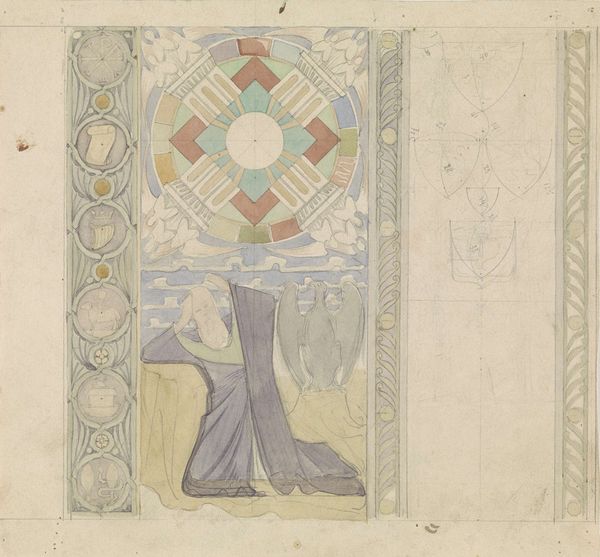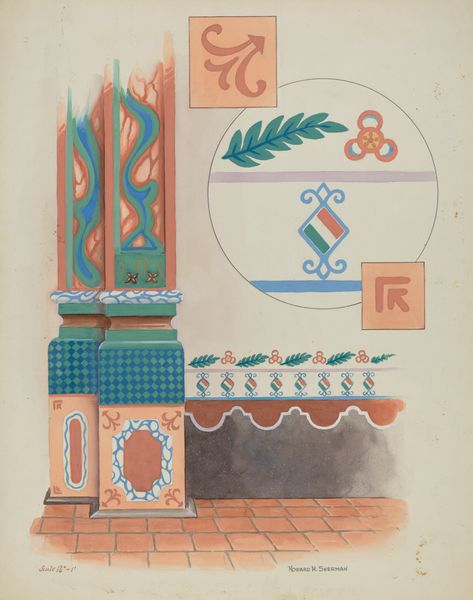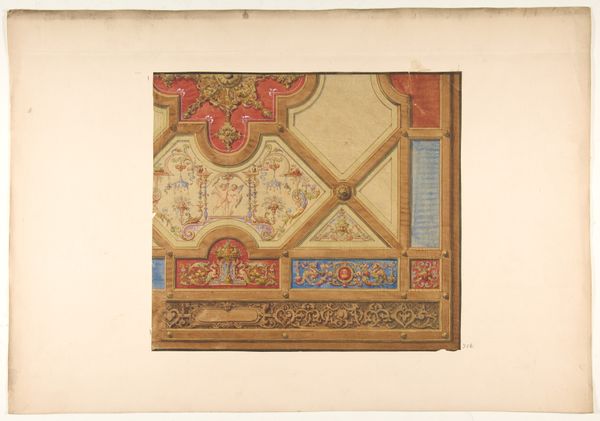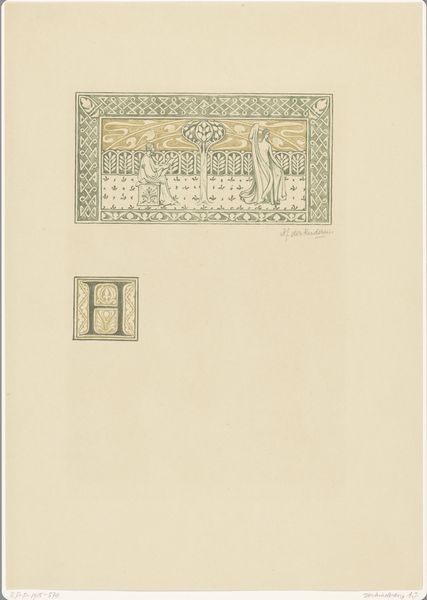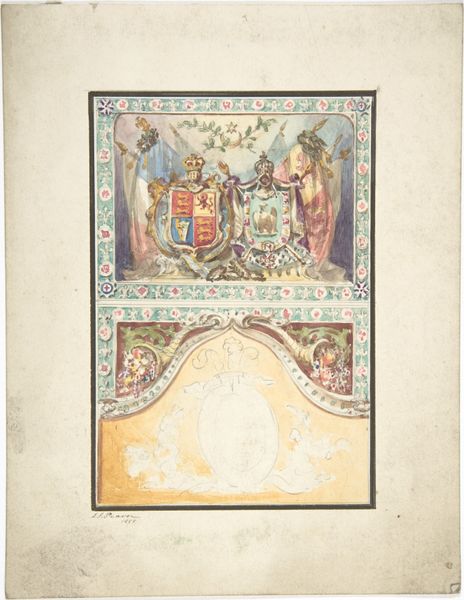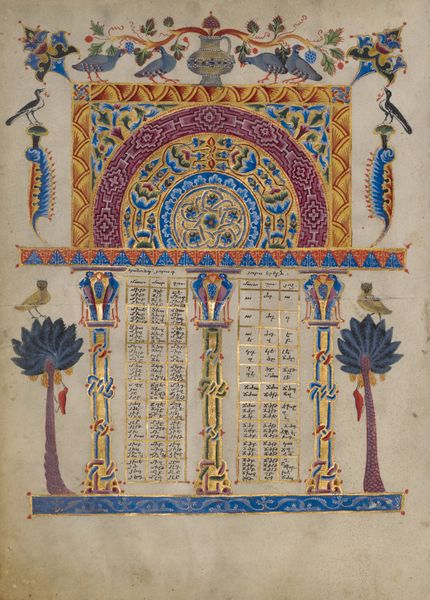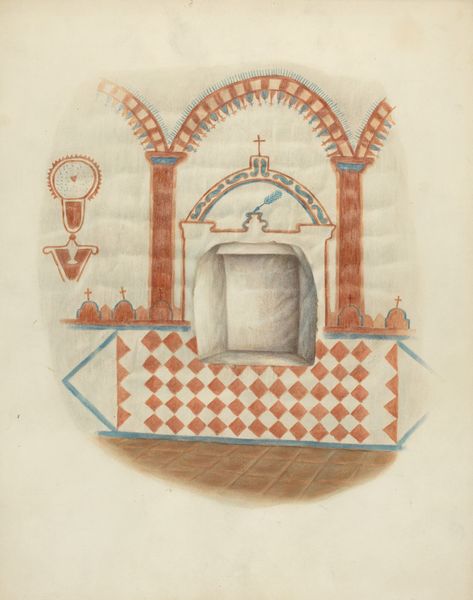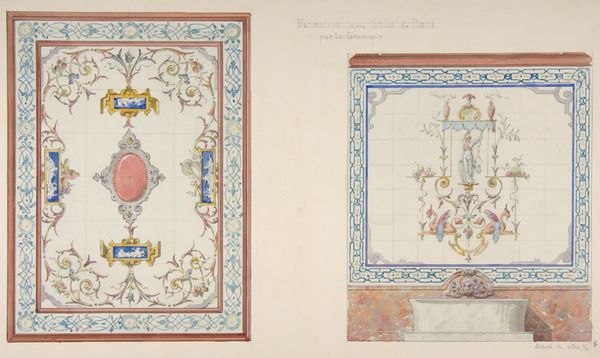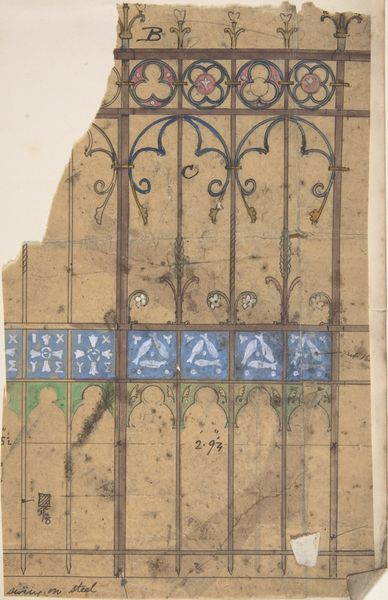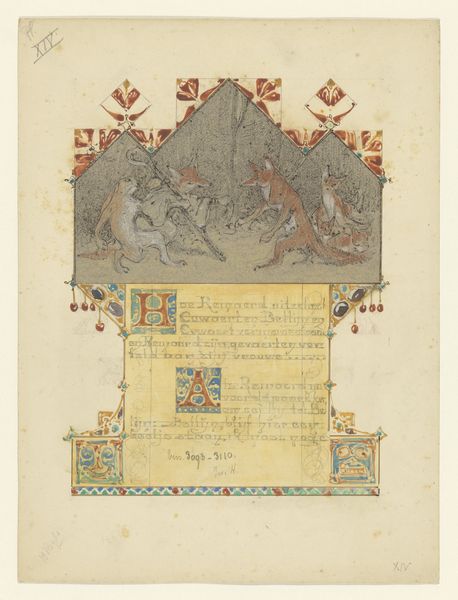
drawing, painting, watercolor
#
drawing
#
water colours
#
painting
#
watercolor
#
coloured pencil
#
watercolour illustration
#
academic-art
#
regionalism
#
watercolor
Dimensions: overall: 35.7 x 27.9 cm (14 1/16 x 11 in.) Original IAD Object: 1/2"=1'approx.
Copyright: National Gallery of Art: CC0 1.0
Editor: Here we have Howard H. Sherman’s “Side Altar, San Luis Rey Mission,” a watercolor painting from 1936. I find it so interesting how he combines these architectural elevations with these very colorful decorative elements. How would you interpret this piece? Curator: Well, looking at this from a historical perspective, it is more than just a pretty watercolor. This piece reflects a critical moment in American art, specifically Regionalism. This style looked critically at distinctly American scenes, which this side alter perfectly captures through its blend of the Mission Revival Style with the design scales featured on the left of the painting. Editor: Interesting, so the Regionalist movement embraced those kinds of distinct architecture? Curator: Precisely. After World War I, and during the Depression, many American artists turned away from European modernism and sought to define a uniquely American artistic identity. Places like San Luis Rey Mission, with its layers of cultural and political significance, offered fertile ground for this artistic exploration, focusing less on accurate rendering of the alter. But instead placing design first and form second, by using watercolor paint. This reflects the history and changing aesthetic values around such images. What do you think about its rendering with watercolor, compared to say oil paint? Editor: That’s a good point. The medium feels appropriate to the almost… ephemeral sense of memory being captured? Like this is a moment of history being simultaneously preserved and also gently fading away. Curator: I agree. It brings out questions of who this art was made for, what are the politics of documenting this altar during a very specific moment of both economic hardship, and growing cultural Nationalism? How do you think that impacts a viewer's interpretation? Editor: Thinking about it that way gives the painting more weight. It becomes less a pretty picture and more of a social artifact, speaking to the values of a specific time and place. Curator: Exactly. And understanding that historical context helps us to see how even seemingly straightforward depictions of everyday objects or architecture are loaded with cultural and political meaning. Editor: That really makes me think differently about the art of that period and how artists chose their subjects. Thanks for helping me consider art from that socio-historical perspective.
Comments
No comments
Be the first to comment and join the conversation on the ultimate creative platform.

